When it comes to Hokkaido food, there are plenty of great options, even for the most fastidious gourmet. Ramen, the iconic food in Hokkaido and even Japan, rooted in the streets, has become a must-try for travelers, especially for noodle lovers.
Choosing from the many Hokkaido ramen shops can be overwhelming, though–with different regional ramen varieties and so many locations out there, it’s really difficult to narrow down where to eat Ramen in Hokkaido. So here we come up with this ultimate guide to Hokkaido Ramen, with introductions to unique local flavors, how to eat, and a curated list of some of the best places to visit in Hokkaido for ramen!
What’s more, if you love ramen, go and join the Hokkaido Ramen Festival!
Table of Contents
What is Hokkaido Ramen?
How to Eat Ramen in Hokkaido
Hokkaido’s Regional Ramen Varieties
Popular Ramen Shops in Hokkaido
Manners at Ramen Shops
An Easy Hokkaido Ramen Recipe
Hokkaido Ramen Festival
What is Hokkaido Ramen?
Hokkaido ramen refers to a type of ramen that originated and is popular in Hokkaido, Japan. Due to the cold weather and abundant seafood in Hokkaido, the local ramen has developed a unique style, characterized mainly by a thick soup base, elastic noodles, and rich ingredients. Hokkaido, along with Kyushu and Tokyo, is known as one of the three major ramen regions in Japan. Moreover, Hokkaido ramen varies in flavor due to the local characteristics of each city in the area.
The three representative ramen of Hokkaido are miso ramen from Sapporo, soy sauce ramen from Asahikawa, and salt-flavored ramen from Hakodate. The broth is mostly cooked by simmering pork bones, chicken bones, seafood, and other ingredients for a long time, and has a rich flavor. Local Hokkaido ingredients such as Hokkaido corn, cream, vegetables, and seafood are used. The flour used in Hokkaido ramen is one of the important sources of its deliciousness and characteristics. Medium-thick rolls or flat noodles made from local wheat are more likely to absorb the soup. Typical Hokkaido ramen toppings include stir-fried bean sprouts, corn, butter, barbecued pork, bamboo shoots, seaweed, and hard-boiled eggs.
Hokkaido ramen is a combination of thick soup and calorie-rich ingredients that keep you warm in very cold weather.
The Nutrition of Hokkaido Ramen
You're probably thinking, "Is it high in calories? Hokkaido ramen is very tasty and nutritious. However, due to its rich broth and ingredients, it is relatively high in calories and fat, making it less friendly to dieters.
Typically, a bowl of Hokkaido ramen has 20-30g of protein, 60-90g of carbohydrates, 15-35g of fat (especially miso ramen, which is often made with butter and lard), and 550- 800kcal. Of course, Sapporo miso ramen is usually higher in calories than soy sauce and salt.
Tips for reducing calories and fat: You can choose less oil, remove butter, or drink less soup. Some ramen shops in Hokkaido offer small bowl portions or "low-salt options". You can also replace the side dishes with boiled eggs, vegetables, etc., to increase protein and fiber, which is helpful for a balanced diet.
How to Eat Ramen in Hokkaido
For visitors to Hokkaido who want to eat the most authentic Hokkaido ramen, in addition to choosing local flavors such as miso, soy sauce, and salt flavors, it is also important to pay attention to the way you eat, the combination, and the timing.
1. Drink the soup first. After the ramen is served, smell the rich aroma of miso, the rich flavor of pork bones, and the fresh taste of fish and shellfish. Then take a sip of the original soup first to feel the layers of the broth.
2. Add toppings, such as corn, barbecued pork, hard-boiled egg, butter, bean sprouts, etc., in order from light to rich. Vinegar for ramen is always on the table to relieve fatigue.
3. Eat noodles. The Japanese value quick results when eating ramen. It is usually finished within 10 minutes. This not only prevents the noodles from becoming soft but also allows the soup to coat the noodles.
4. If you like, you can also eat the remaining soup with rice.
Tips:
Although Japanese people are not allowed to make noise while eating, it is perfectly acceptable to make noodle-sucking noises while eating ramen.
Hokkaido ramen is rather salty, so you don't have to drink up all the soup.
Menus Usually Paired with Hokkaido Ramen - Side Dishes
Gyoza is very common as a main dish with ramen.
Chahan, also known as yakimeshi, is Japanese fried rice that is often served in a set meal with ramen.
Shirataki rice, especially good for thick miso ramen.
A half-boiled egg, sometimes already placed in the ramen. You can also add an extra one.
Hokkaido local beers, such as Sapporo Classic, especially at dinner or in the summer, go perfectly with heavy ramen.
Some ramen shops offer pickles or hot sauces that you can add to enhance the flavor.
Ramen shops in Hokkaido often offer "ramen set meals" or "half ramen + side dishes" combinations, allowing you to experience a variety at once.
Hokkaido’s Regional Ramen Varieties
Hokkaido's three major ramen in Sapporo, Hakodate, and Asahikawa, as well as other local ramen types, represent the influence of food culture and climatic conditions on ramen styles in different parts of Hokkaido.
Sapporo Miso Ramen
Location: Sapporo - Western Hokkaido, and the largest city in Hokkaido
Recommended shops: Aji no Sanpei (味の三平), Sumire (すみれ), Ebisoba Ichigen (えびそば一幻)
Miso ramen was invented in 1955 by Morito Omori, the founder of the famous Sapporo ramen shop "Misono no Mihei". Due to the severe cold in Hokkaido during winter, he was the first to try adding Hokkaido miso to the pork bone broth base and pairing it with rich ingredients such as vegetables and meats. Miso ramen soon became one of the symbolic delicacies of Sapporo and sparked a miso ramen craze across Japan.
Miso ramen has a rich soup base made with red miso or mixed miso (white miso + red miso). The broth is made from pork bones, chicken bones, vegetables, and onions that are sautéed and simmered. Typical toppings are corn, butter, sautéed bean sprouts, barbecued pork, garlic paste, and sweet corn.
Asahikawa Shoyu Ramen
Location: Asahikawa - central Hokkaido city, very cold in winter
Recommended shops: Baikohken (梅光轩), Aoba (青葉), Hachiya (ラーメンの蜂屋)
Another famous Hokkaido ramen, Shoyu Ramen, originated in the late 1940s after World War II. One of the earliest Asahikawa ramen restaurants was Hachiya, founded by Tomoyoshi Aoki, which emphasized a double broth of animal and fish broth. Then, Asahikawa Ramen developed Wス - プ, a blend of chicken and pork bone broth and dried fish and kelp broth.
Asahikawa Shoyu Ramen soup is seasoned with soy sauce, dark in color, and slightly salty in taste. The soup is layered and rich but not greasy. Common toppings include barbecued pork, bamboo shoots, hard-boiled eggs, and scallions.
When eating Asahikawa Shoyu Ramen, international tourists might find it strange that there is a layer of lard fat film on the surface of the ramen. Because the temperature in Asahikawa is low and it is extremely cold in winter, the fat film of lard can play a role in keeping warm.
Hakodate Shio Ramen
Location: Hakodate - a port city in southern Hokkaido, greatly influenced by Western culture
Recommended shops: Ajisai (あ じ さ い), 函馆麺厨房あじさい main shop, ラーメン満龍
The oldest style of ramen in Hokkaido, Hakodate Shio Ramen, dates back to the Meiji era in the late 19th century. Hakodate was one of the early ports of Japan opened to the outside world and was exposed to Western culture at an early age; therefore, the light flavor of salt-flavored ramen became popular.
The clear color of the soup base still retains the early style of Japanese ramen. The broth is usually made from a combination of sea salt and seafood, such as seaweed, dried fish and shellfish, and chicken bones. The noodles are straight and thin. Typical toppings include barbecued pork, fish plate, seaweed, hard-boiled egg, and chopped green onion. Hakodate Shio Ramen has a light, non-greasy flavor that emphasizes the freshness of the ingredients.
Other Types of Local Ramen in Hokkaido
Kushiro Ramen (Kushiro City): One of the earliest ramen in Hokkaido, it has a history dating back to the early Showa period (1920s-30s). The soup base is light soy sauce, usually made by simmering chicken bones, kelp, and dried fish, with a slight seafood flavor. The typical toppings are barbecued pork, seaweed, bamboo shoots, chopped scallions, and Naruto.
Tonkotsu Ramen (Tokachi City): The rich tonkotsu soup is made from local "Tokachi pigs". The taste is relatively milder than that of Kyushu tonkotsu ramen and not greasy.
Curry Ramen (Muroran City): It combines the rich and fragrant Japanese home-style curry (miso or soy sauce base) soup with ramen, and has a slightly spicy and sweet taste.
Seafood Ramen (Rumoi City): The soup base is made by boiling freshly caught seafood from the Sea of Japan, such as scallops, shrimps, crabs, kelp, etc. The broth tends to be light or slightly salty. Common toppings include crab leg meat, scallops, and fish cakes.
Cream/Milk Ramen (Otaru City): Popular among the young locals and tourists, it is a creative ramen style from Hokkaido. The local dairy products, such as milk, cream, and cheese, make it very special. Toppings may include bacon, corn, and diced cheese.
Spicy Ramen (Noboribetsu City): The soup base leans towards spicy miso and is stir-fried with local chili peppers and minced garlic. It is suitable for those who have a strong taste and like spicy food. Some ramen shops are named "Hell Ramen" to attract visitors.
Hokkaido Instant Ramen
You can find many local specialty instant ramen brands at Hokkaido airport duty-free stores, supermarkets, and major convenience stores. You can even buy them and take them home to eat. Hokkaido's three major ramen styles, Sapporo Miso Ramen, Asahikawa Shoyu Ramen, and Hakodate Shio Ramen, are the most common.
Many products use liquid soup packets and special oil packets to restore the true store flavor. Instant ramen toppings are usually corn, scallions, dried barbecued pork, and seaweed. Recommended brands include Santouka, Ebisoba Ichigen, and Fujiwara Somen.
Hokkaido Ramen Delivery
Do you want to eat ramen at home without going out? Many of Hokkaido's leading ramen restaurants offer vacuum-packed refrigerated ramen sets or frozen ramen delivery. Takeaway ramen usually includes raw ramen, a condensed soup base, and toppings (some come with barbecued pork and seasoned egg).
Instant ramen is cheaper and more convenient. However, ramen delivery is more recommended because it can reproduce the flavor of authentic ramen.
Popular Ramen Shops in Hokkaido
Ramen Hokkaido Santouka (founded in 1988)
Head Store Address: 1-jo Dori 8-chome 348-3, 1F, Sasaki Building, Asahikawa-shi, Hokkaido, Japan
Price: Approximately 850 to 1,300 Japanese yen (about $6 to $9)
Recommended menu: Salty ramen, miso ramen, soy sauce ramen
Japanese Ramen Noodle Lab Q
Address: 1-3, Nishi 2-chome, Kita-1-jo, Chuo-ku, Sapporo City, Hokkaido
Price: Ramen approximately 950-1,200 Japanese yen (about $6 - $8)
Hours: Open only during lunchtime, with longer queuing times (approximately $6.20 - $9)
Men-Eiji (Michelin-starred Restaurant)
Address: 1-12, 11-chome, Hiragishi 2-jo, Toyohira-ku, Sapporo City, Hokkaido
Signature dish: Shoyu ramen with tonkotsu pork bone
Price: Approximately 1,000-1,300 Japanese yen (approximately $6.50 - $8.50)
Ebisoba Ichigen (えびそば)
Address: 1024-10, Nishi 9-chome, Minami 7-jo, Chuo-ku, Sapporo City
Signature: Shrimp-flavored ramen
Price: 900-1,200 Japanese yen (approximately $5.50 - $7.15)
Baikohken
Address: 8-chome, 2-jo-dori, Asahikawa City, Hokkaido (next to Feel Asahikawa Department Store)
Signature dish: Authentic Asahikawa Soy Sauce Ramen
Price: 800-1,200 Japanese yen (approximately $5.90 - $7.80)
If you are in the United States, you can also taste ramen at places like Hokkaido Ramen House, Hokkaido Ramen Santouka Bellevue, and Hokkaido Ramen & Sushi Bar. However, some of them incorporate local styles and may not be authentic enough.
Manners at Ramen Shops
In Japan, especially in Hokkaido, where tradition and details are well kept, it is recommended that you follow the local etiquette when eating ramen to show respect for the chef, staff, and the food. Apart from smiling to respond to the staff who welcome you, and waiting for your seat in order. There are some other precautions.
1. Don’t talk aloud or make noise while dining. Keep your conversation low or even silent.
2. Surprisingly, the sound of sucking on ramen noodles is allowed and considered a compliment and a sign of enjoyment.
3. Use chopsticks to cool the noodles, instead of blowing directly on the hot soup with your mouth.
4. If you are pairing ramen and rice, do not stick your chopsticks vertically in the rice, as it is the practice in Japanese mourning ceremonies.
5. There is a paper bib sometimes provided in the restaurant, you will appreciate it if you offer to use it.
6. Try to finish your meal before leaving to show your respect for the food and the chef. If you really cannot finish it, it is better that you politely apologize.
7. After eating, say “ごちそうさまでした”, pronounced gochisousama deshita, which means “thank you for your hospitality”.
8. No tipping. If you leave money, it may be considered forgetful or bad manners.
An Easy Hokkaido Ramen Recipe
Here is a simplified version of the Hokkaido Miso Ramen recipe that calls for simple ingredients. You can try it at home.
Prepare the Ingredients:
1. To make the ramen broth, prepare ready-to-make chicken broth or pork bone broth, miso paste, garlic, ginger, white sesame seeds, soy sauce, mirin, or sugar, and hot pepper paste
2. Prepare the ramen noodles
3. Prepare the toppings: bean sprouts, green onions, corn kernels, hard-boiled eggs, sizzling BBQ pork (can be substituted with ham or roast pork), butter
However, you can surely adjust, eliminate, or add ingredients or seasonings to suit your taste.
Step-by-Step Guide to Cooking:
Step 1: Add a little oil to the pan, stir-fry the minced garlic and ginger until fragrant, then add miso, sesame seeds, soy sauce, and mirin, and stir-fry until fragrant.
Step 2: Pour the chicken stock or pork bone broth into the pot, mix with the stir-fried miso paste, and steam together.
Step 3: Cook ramen noodles
Step 4: Prepare the ingredients.
Step 5: Put the cooked ramen into a bowl, pour in the hot broth, add the toppings, and a small piece of butter.
Hokkaido ramen is ready, you can enjoy it!
Hokkaido Ramen Festival
Every year, ramen festivals are held in Japan and even in some cities around the world. If you are a foodie who loves noodles, the Sapporo Ramen Show in Hokkaido is an event you cannot miss. This annual festival showcases some of the best ramen from all over Japan. From rich tonkotsu soup to delicious miso and some local styles - there's a flavor preference for almost everyone.
The Sapporo Ramen Fair is held at the Great Odori Park, is divided into a first half and a second half. The first one in 2025 is May 12-18, and the second is May 20-25.
Travel to Hokkaido and Taste Authentic Ramen with Hi Five Trip
So you’ve known everything about Hokkaido ramen, can’t wait to try? Simply choose one of our best-selling Japan tours to Hokkaido below:
Furthermore, a customized Hokkaido tour is our top recommendation for you to explore the best Hokkaido has in store.

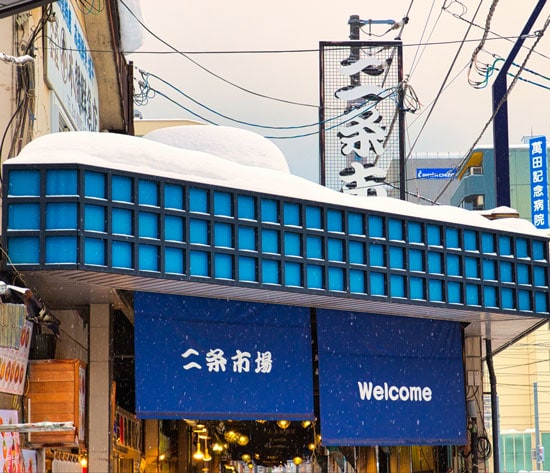
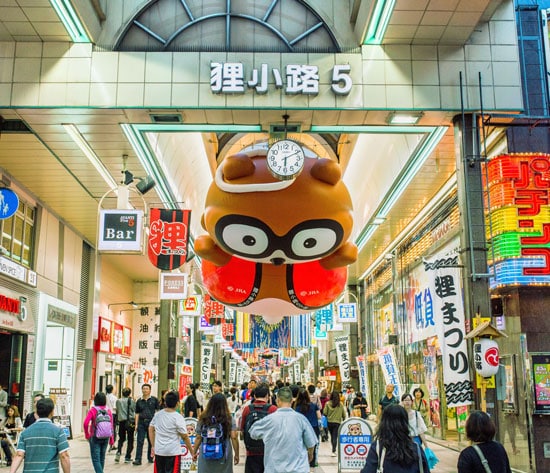
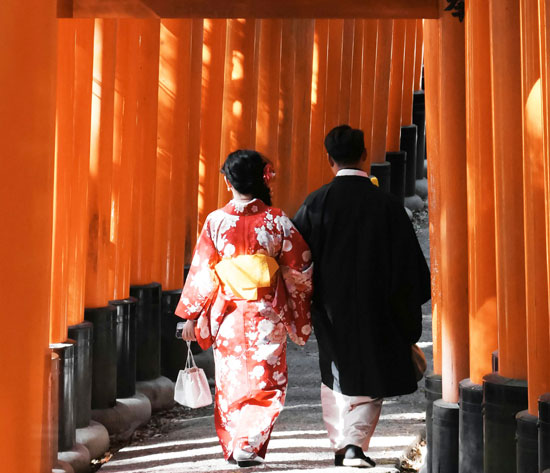
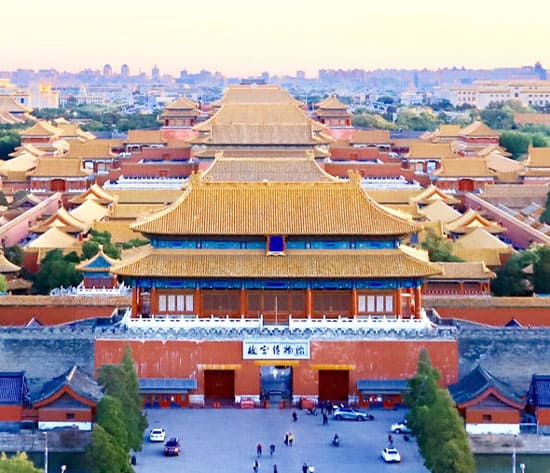
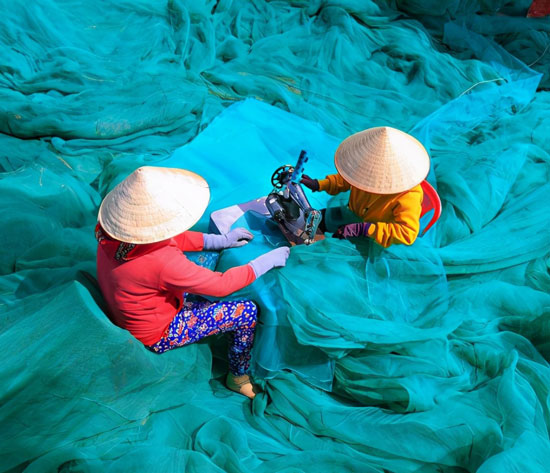
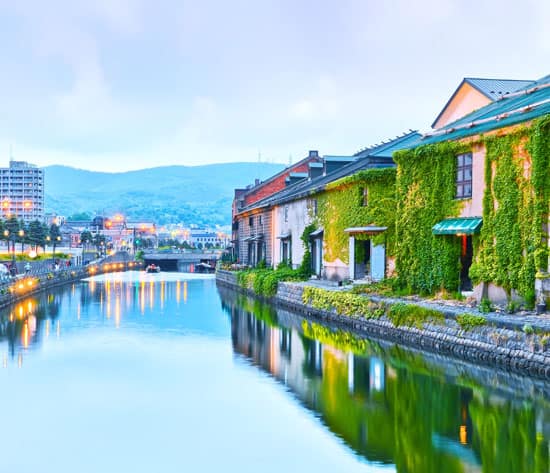
Have a Question?
You might see your comment appear on this page, but your email address and full name will not be published. Your personal information will remain confidential. Our Asia travel experts will get back to you as soon as possible. Required fields are marked *